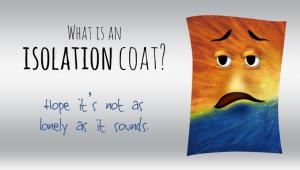Looking for design inspiration? Browse our curated collections!
January 8th, 2015 - 01:27 PM

If you've read the descriptions for my paintings, you've probably seen me refer to them as having an "isolation coat" and minimum of 2 coats of varnish. If you've asked, "What the heck is an isolation coat and why should I care how many coats of varnish it has?", this post is for you.
Over time, things get dusty and dingy. Works of art are no exception, no matter how high the quality of materials used. Time takes its toll. The surface of acrylic paintings attracts dust, especially when textured (as mine usually are). At some point, original paintings all need to be cleaned, whether it's a regular dusting or a thorough cleaning over the years.
A painting with no isolation or varnish coat is completely exposed to the elements. That means the paint itself is what collects dust and gets dingy over time. Any cleaning agent would be applied directly to the surface of the paint itself, which could cause damage to the art.
I'm going to skip to the varnish coat first. The varnish coat is what gives the painting its final sheen, matte or glossy. It also serves as a layer between the elements (air, etc) and the paint itself. The varnish takes on all the wear-and-tear, while the painting remains protected. A varnished surface is far easier to clean and leaves far less risk of damaging the actual painting.
"But if the varnish gets dingy over time, doesn't that still ruin the look of the painting?"
And that's where the isolation coat comes in.
Before the varnish is applied to a finished acrylic painting, an isolation coat should be applied. There are 3 layers…paint on the bottom, isolation coat in the middle, and the varnish on the top. When the varnish has aged to the point where it needs some restoration (we're talking decades), the dingy varnish coat can be removed without disturbing the paint layer. The isolation coat serves as a barrier, more or less, allowing old varnish to be safely removed and new varnish applied.
Even with an isolation coat, restoring artwork is a very delicate process, so please consult an art restoration professional before attempting it as your next DIY weekend project!
Comments
There are no comments on this blog. Click here to post the first comment.